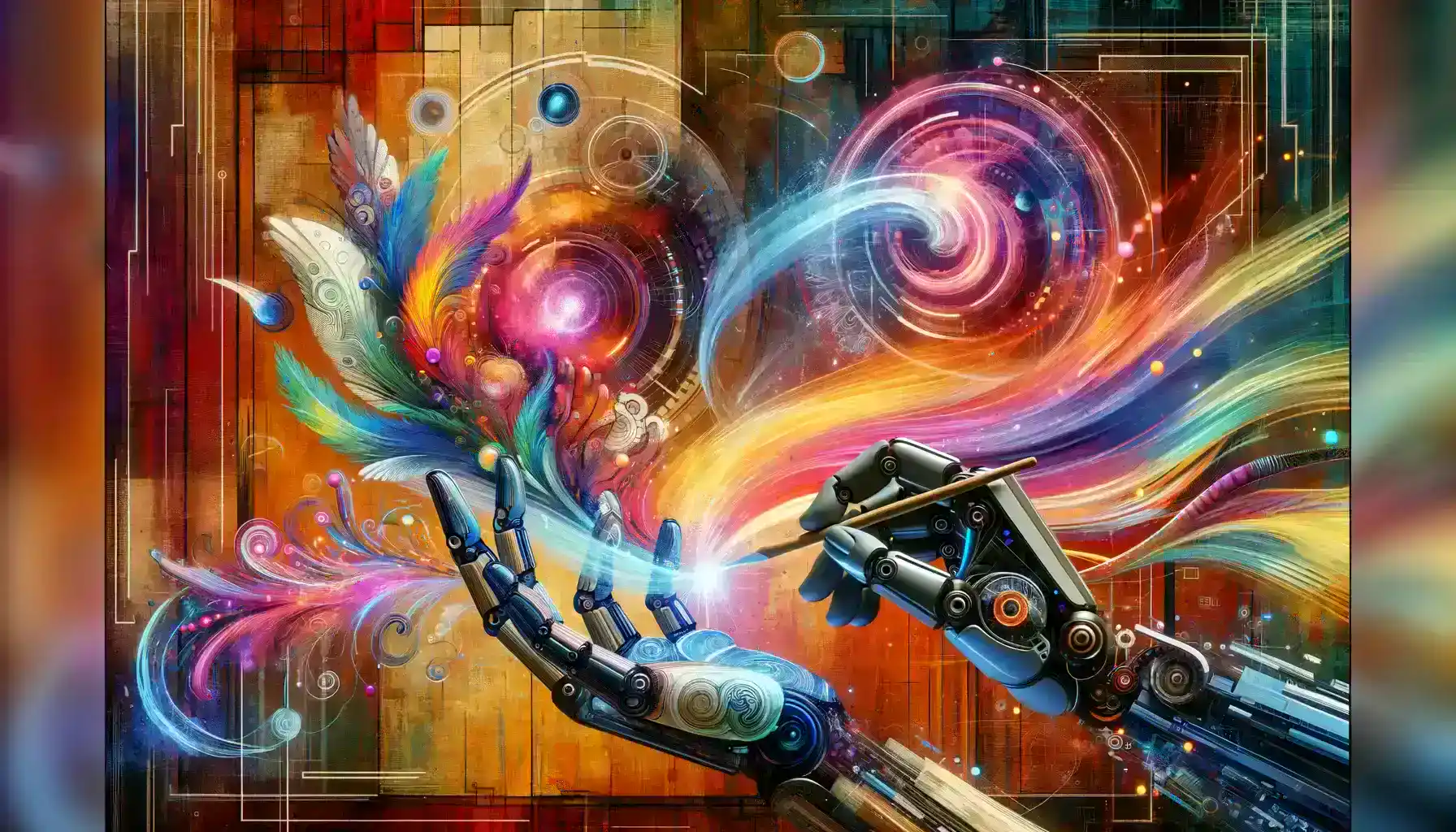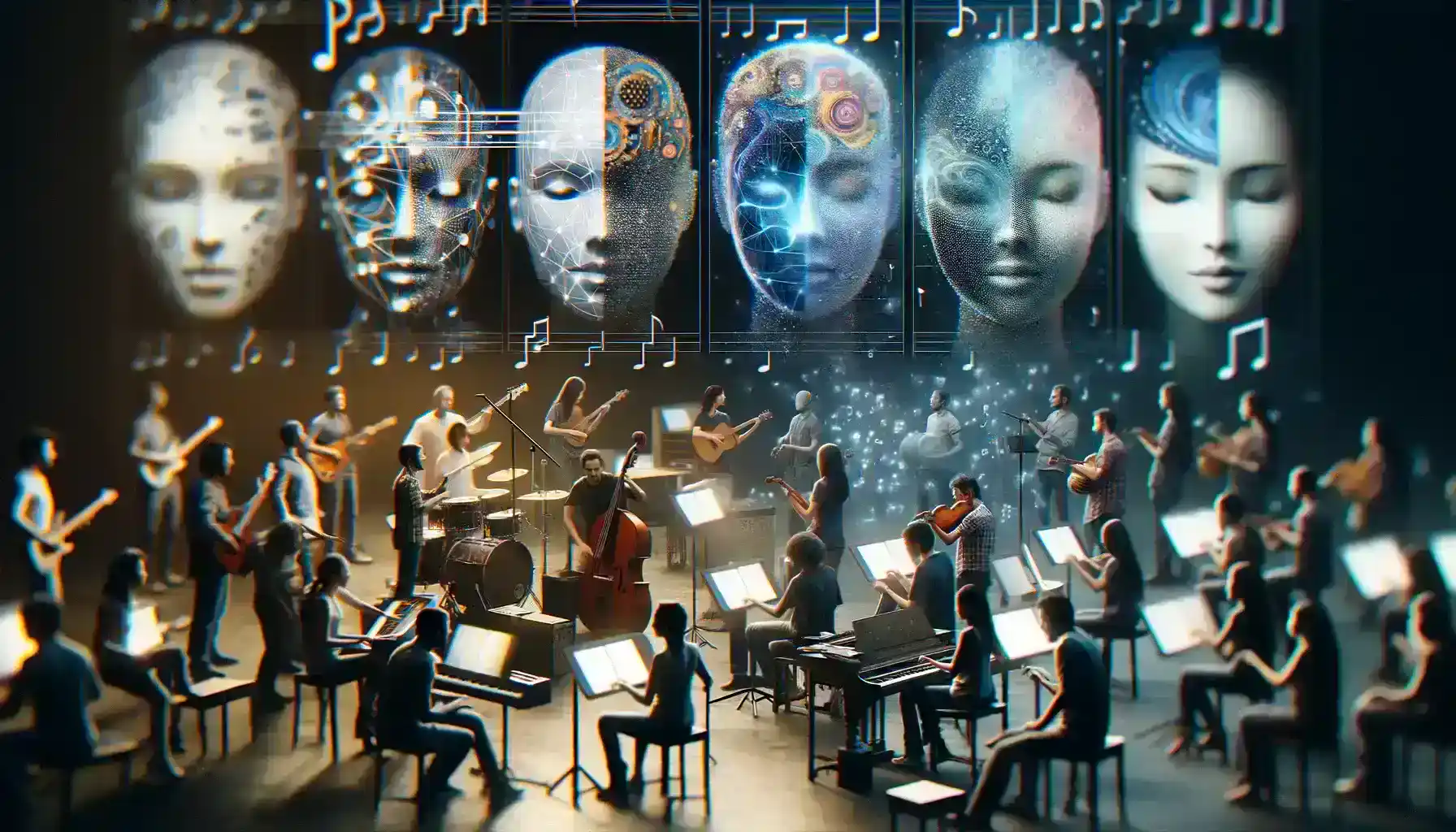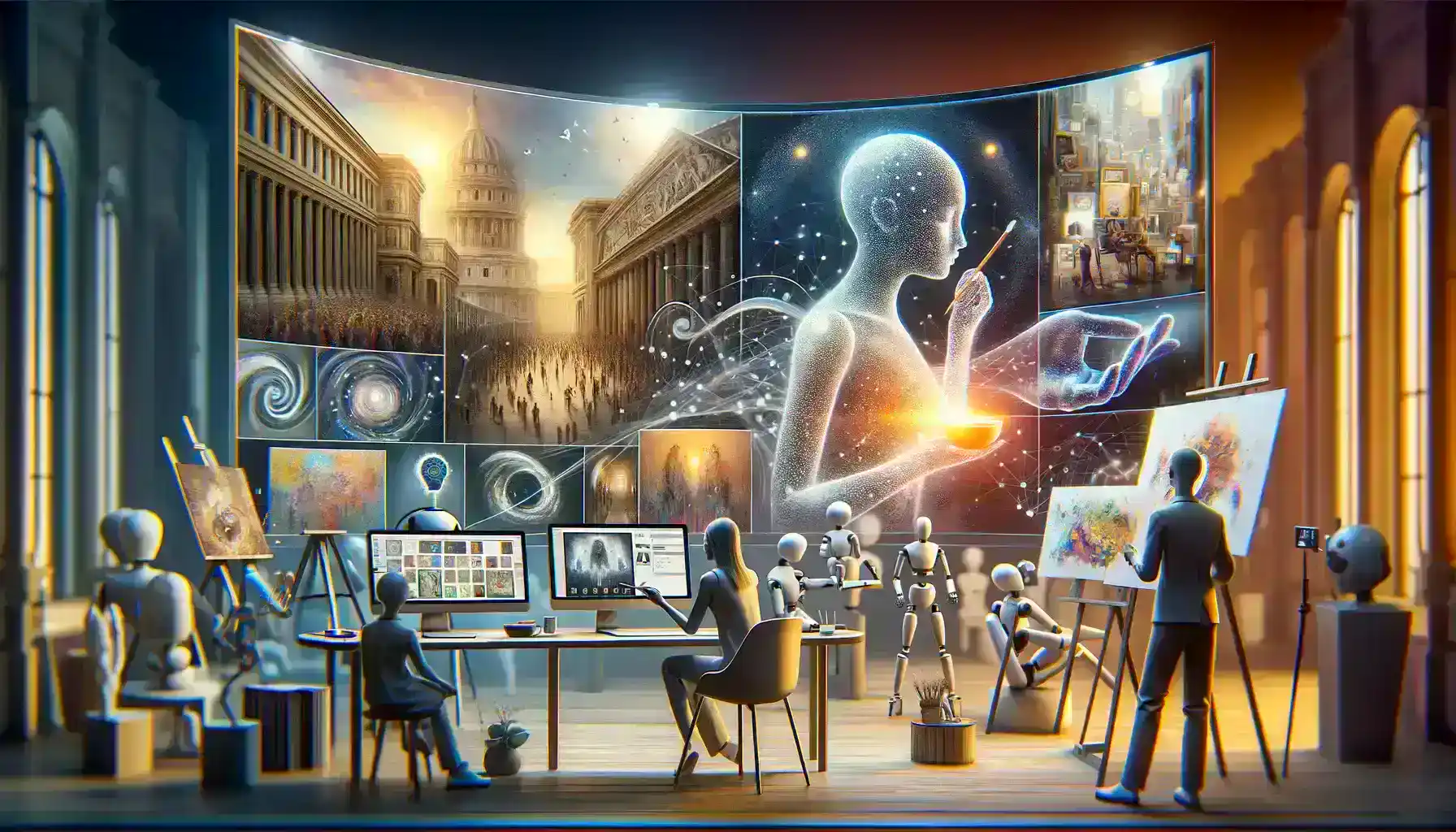Table of Contents
In the ever-evolving intersection of art and technology, the year 2024 stands as a remarkable milestone. A profound alchemy is at play, where the ethereal realm of human creativity and the computational prowess of artificial intelligence (AI) converge to birth a revolutionary force: AI Art Generator – Software. As the digital sands of time continue to shift, this powerful tool is rewriting the narrative of creativity, reshaping the very landscape upon which artists and their audiences tread.
This article embarks on a captivating journey into the heart of AI art generation, unveiling the profound impact it wields on artists, society, and the very essence of what it means to create. Along the way, we’ll unveil real-world examples that serve as shining testaments to the transformative potential of AI Art Generator – Software, offering a glimpse into the awe-inspiring artistic alchemy of 2024.

The Rise of AI Art Generation
The rise of the AI art generation signifies a long-anticipated revolution that’s been brewing at the crossroads of technology and creativity. AI Art Generator – Software, driven by the extraordinary capabilities of deep learning algorithms and neural networks, has experienced an unprecedented surge in popularity over recent years. This surge can be attributed to a broad spectrum of enthusiasts, including not only artists but also technologists, who have warmly embraced this innovative fusion of art and artificial intelligence.
The impact of AI Art Generator – Software is now palpable within the art world, leaving an indelible mark on how we perceive, create, and engage with art. This remarkable convergence heralds a new era where machines contribute to the creative process, expanding the horizons of artistic expression and pushing the boundaries of human imagination.
How AI Art Generator – Software Works
AI Art Generator – Software operates at the intersection of art and artificial intelligence, employing intricate neural networks to unlock the secrets of creativity. These programs start by immersing themselves in a vast sea of artistic data, comprising countless artworks from various artists, genres, and styles. Through this immersive experience, the AI algorithms meticulously dissect the styles, techniques, and patterns inherent in these artworks, gradually discerning the nuances that define each artist’s unique touch.
This knowledge is not merely passive, for AI Art Generator – Software actively learns, absorbing the essence of countless creative journeys. Armed with this newfound wisdom, the software embarks on its creative odyssey. When presented with a new input or prompt, it draws upon the reservoir of artistic insight it has amassed. With agility and precision, it applies these learned patterns to craft original artworks that are a fusion of the old and the new, the human and the artificial.
The result is a tapestry of creativity, where the boundaries between human and machine blur, and a new realm of artistic expression is born
Artistic Collaboration with AI
Artistic collaboration with AI represents a dynamic synergy between human creativity and machine precision. By employing AI Art Generator – Software, artists can harness the software’s capabilities to assist in the creative process. This entails AI algorithms generating essential elements like concepts, textures, or color schemes, allowing artists to concentrate on the emotional and conceptual dimensions of their work. This partnership empowers artists to transcend technical constraints, fostering innovation and pushing the boundaries of artistic expression in uncharted and exciting directions.

Breaking Down the Technical Barriers
AI Art Generator – Software has disrupted the traditional art world by rendering technical expertise obsolete. It empowers individuals, irrespective of their artistic skills, to produce captivating art effortlessly. These user-friendly tools democratize creative expression, making it accessible to a broader audience, and fostering a new era where imagination knows no bounds, and everyone can partake in the artistic journey without the constraints of technical proficiency.
Harnessing the Artistic Alchemy: Real-World AI Art Generator Instances
AI Art Generator – Software illustrates these innovative tools’ diverse applications and capabilities.
DeepDream by Google: DeepDream employs deep neural networks to transform ordinary images into surreal and dream-like artworks. It does this by identifying patterns and shapes within the input image and enhancing them in a psychedelic and fantastical way. Artists and photographers have embraced DeepDream for its ability to add an otherworldly twist to their work. For instance, a photo of a dog can be turned into a vivid, abstract landscape reminiscent of a Salvador Dalí painting. This software showcases how AI can expand the boundaries of creativity by generating unique and mesmerizing visuals that challenge conventional artistic norms.
Prisma App: Prisma, a mobile app, leverages AI filters to instantly turn photos into artworks resembling famous art styles. Users can select from a variety of filters inspired by renowned artists like Van Gogh and Picasso. Prisma’s intuitive interface allows anyone to transform an ordinary snapshot into a work of art, making art creation accessible to a wider audience. This app exemplifies how AI can democratize artistic expression, allowing individuals with no formal training in art to create visually striking pieces.
DALL·E by OpenAI: DALL·E represents a cutting-edge fusion of language and visual art. This AI system generates images based on textual descriptions, breaking down the traditional barriers between written and visual creativity. For instance, if you describe a “giraffe made of spaghetti,” DALL·E can produce an image that precisely matches that description. This opens up limitless possibilities for creative expression, enabling artists and storytellers to bring their imaginative concepts to life in visual form. DALL·E demonstrates how AI can bridge diverse forms of art and enhance collaborative efforts between humans and machines.
AI-Generated Music: AI has extended its creative reach beyond visual arts to music composition. Programs like AIVA and Amper Music utilize AI algorithms to analyze musical patterns, styles, and user preferences, creating original music compositions. These AI-generated tunes can be emotionally resonant and enjoyable, showcasing the potential for technology to augment and inspire musical creativity. Musicians and composers can use AI as a tool to explore new musical territories and spark their creative processes.
Portrait-Generating AI: AI has ventured into portraiture, generating lifelike faces of individuals who never existed. This technology finds applications in gaming, storytelling, and social media. Companies like Generated Photos utilize AI to create convincing and diverse portraits that can be used in various digital media. This not only streamlines character creation in gaming and animation but also raises intriguing questions about identity and authenticity in an era of AI Art Generator – software personas. Portrait-generating AI demonstrates the intersection of technology and creativity in the digital age.

The Ethical and Copyright Challenges
The ethical and copyright challenges posed by AI Art Generator – Software are complex and multifaceted. One central issue revolves around ownership rights. When AI creates artwork independently, determining the rightful owner becomes a murky territory. Traditional copyright laws were designed to protect human creators, leaving AI’s creative output in a legal gray area.
Furthermore, AI can replicate the style of famous artists, which raises questions about copyright infringement. While the AI itself doesn’t have artistic intent, it can mimic renowned artists so convincingly that it blurs the line between homage and plagiarism. Artists, collectors, and institutions must grapple with these questions when displaying or selling AI-generated pieces.
These debates will significantly influence the future of AI-generated art, prompting legal reforms, ethical guidelines, and new methods of attribution. Finding a balance between acknowledging AI’s creative potential and safeguarding human artistic integrity remains an ongoing challenge in the ever-evolving landscape of AI and creativity.
The Future of AI Art
The future of AI art holds immense promise and potential. As AI Art Generator – Software advances, it is poised to become an integral component of the art world in various ways. Firstly, we can anticipate AI-generated art being prominently featured in art exhibitions and galleries. Art curators may embrace AI as a means to showcase avant-garde, boundary-pushing artworks that challenge traditional norms.
Moreover, design studios are likely to incorporate AI as a powerful tool for ideation and prototyping. AI’s ability to rapidly generate diverse creative concepts will expedite the design process and lead to innovative solutions in various industries.
Additionally, the therapeutic value of AI art is gaining recognition. Art therapy sessions may leverage AI to assist individuals in their creative expression and emotional healing, particularly for those with limited artistic skills.
In sum, the future of AI art holds the promise of expanding the horizons of creativity, redefining artistic boundaries, and enriching various aspects of our lives through the harmonious fusion of human ingenuity and AI’s analytical prowess.

Harnessing AI Art Generator – Software: A Glimpse into the Creative Revolution
AI Art Generator – Software in 2024 marks a pivotal moment in the evolution of human creativity. These tools have democratized art, breaking down technical barriers and enabling individuals of various backgrounds to engage in artistic expression. The showcased real-world examples illustrate the breadth of AI’s creative capabilities, from transforming photographs into surreal masterpieces to generating music and even lifelike portraits.
However, the rise of AI in art is not without its challenges. The ethical and copyright concerns surrounding AI-generated content call for thoughtful consideration and legal frameworks. As we move forward, society must address these issues to ensure a fair and ethical use of AI-generated art.
Looking ahead, the future holds promise and excitement. AI’s ever-evolving capabilities will continue to redefine the boundaries of human creativity, challenging us to explore new horizons and pushing the art world into uncharted territories. In 2024, AI stands as a transformative force, offering endless possibilities for creative expression and innovation across various domains.